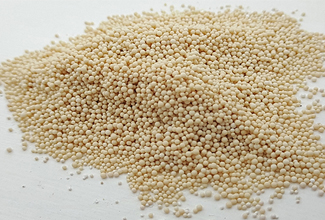The harm and disposal of mineral oil to ion exchange resin
The pollution of mineral oil to resin is mainly adsorbed on the skeleton or coated on the surface of resin particles, resulting in the fouling of resin micropores, resulting in a decrease in the exchange capacity of ion resin, and a significant reduction in the amount of periodic water production, which affects boiler water softening resin and gold extraction resin. etc. work efficiency.

The main sources of mineral oil are as follows:
Methods of dealing with oil-contaminated resins:
First of all, the source of the oil should be quickly identified, the fault should be eliminated, and the continued leakage of the oil should be prevented. If necessary, clean up the accumulated oil in the equipment. Lightly contaminated resins do not necessarily require treatment and can gradually restore their exchange capacity over multiple regenerations. For resins with serious pollution, appropriate treatment methods should be selected through small-scale tests, such as cyclic cleaning with NaOH solution, cleaning with petroleum ether or 200# solvent gasoline (the cleaning process should be strictly fireproof), and combined cleaning with solvent and surfactant. Please contact us for details.

The main sources of mineral oil are as follows:
- The mineral oil infiltrated into the ground is brought into the exchanger with the raw water.
- When using steam to mix and heat the raw water, the oil will be brought into the raw water with the steam.
- The oil-fired boiler uses steam to atomize the fuel oil. When the oil pressure is higher than the steam pressure, the heavy oil (or crude oil) leaks into the steam and enters the condensate desalination system through the condenser.
- Oil in the production process of a refinery or chemical plant leaks into the raw water through the steam system. When the oil content of the influent water of the chemical desalination equipment is 0.5mg/L, the resin can be polluted by oil within a few months.
Methods of dealing with oil-contaminated resins:
First of all, the source of the oil should be quickly identified, the fault should be eliminated, and the continued leakage of the oil should be prevented. If necessary, clean up the accumulated oil in the equipment. Lightly contaminated resins do not necessarily require treatment and can gradually restore their exchange capacity over multiple regenerations. For resins with serious pollution, appropriate treatment methods should be selected through small-scale tests, such as cyclic cleaning with NaOH solution, cleaning with petroleum ether or 200# solvent gasoline (the cleaning process should be strictly fireproof), and combined cleaning with solvent and surfactant. Please contact us for details.
Next Article :
Related Products
-
.jpg) Super Absorbent Polymer SAP for AgriculturalMain ngredient:Potassium PolyacrylatePhysical Property:Non-toxic,NonpollutingFunction:Drought control /Saving water /Soil conditioner
Super Absorbent Polymer SAP for AgriculturalMain ngredient:Potassium PolyacrylatePhysical Property:Non-toxic,NonpollutingFunction:Drought control /Saving water /Soil conditioner -
 Macroporous Weak Acid Chelating Resin for Cobalt Removal Copper Removal Nickel Removal Zinc Removal ResinEquivalent foreign models: Puromet MTS9301Appearance: Spherical BeadsIonic Form: Na+ form
Macroporous Weak Acid Chelating Resin for Cobalt Removal Copper Removal Nickel Removal Zinc Removal ResinEquivalent foreign models: Puromet MTS9301Appearance: Spherical BeadsIonic Form: Na+ form -
.png) Anionic Polyacrylamide ResinPurity : 99.9%Color : WhiteMelting Point : >150°℃
Anionic Polyacrylamide ResinPurity : 99.9%Color : WhiteMelting Point : >150°℃
Message

